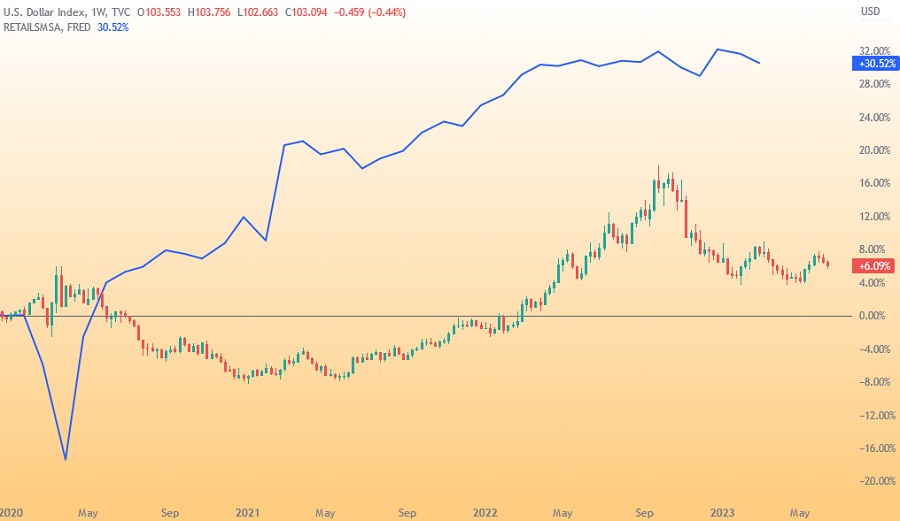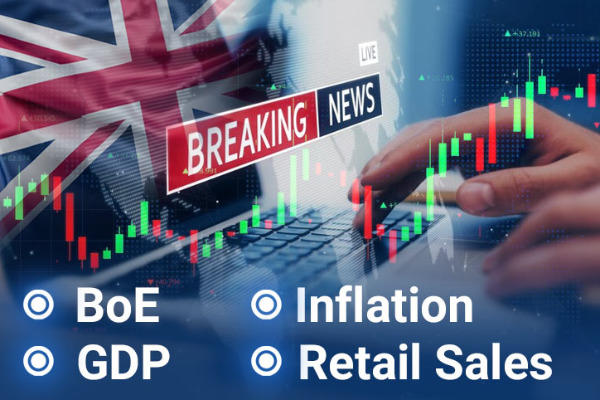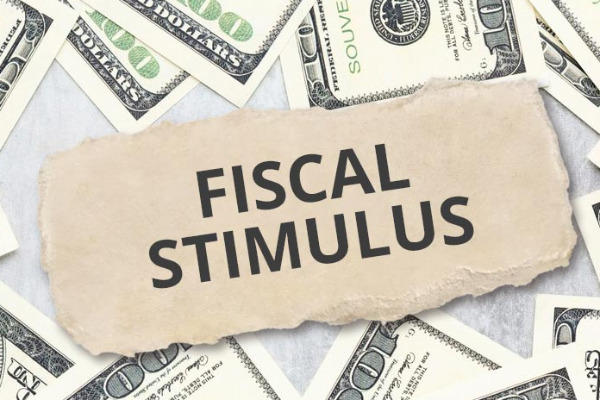Retail sales data release is an event that constantly takes forex market attention. What is Retail Sales Data, why is it important, and how do we trade it?

Retail Sales data release is one event that constantly takes forex market attention at almost all major currencies. Point of fact, US Retail Sales data is one of the most influential economic reports along with The Fed announcement, NFP reports, and CPI data. As such, the US Retail Sales announcement is expected to impact the US Dollar in all pairs.
What Is Retail Sales?
Retail Sales data is an economic indicator that sees the economy from the consumer's eyes. The report does not actually comprise all transactions that occur in a country, but it is some kind of survey that is sent out to randomly-sampled retailers. The retailers were categorized into several groups, and then some samples will be taken from each group to send up the data.
The common weakness of consumer data is that although they are sufficient to know if you own a business, they often don't reflect the whole situation in the real economy. In the case of Retail Sales data, sales of certain goods and services are sometimes excepted from the survey.
US Retail Sales, for example, did not include Automotive sales. Additionally, Retail Sales report does not take inflation into account and disregard price fluctuation in the real economy.
Nevertheless, Retail Sales data is a monthly report of an aggregated measure of a country's retail goods and services over a certain time period. The data is presented in percentages of ups and downs. There are seasonal trends when consumption rose due to national holidays or religious celebrations, and so the government usually put seasonal adjustments to make it less peculiar.
The higher the percentage of Retail Sales, the better it is. If it declines from time to time, then it is an alarm warning for policy-makers.
See Also:
Why Is Retail Sales Data Important?
Many countries in the world rely on consumption and are known as consumer-driven countries, such as the US, UK, and Canada. In those countries, Retail Sales is an important number to see which industry is booming, which one slump, and how consumers are responding to certain government policies
Therefore, people are looking into the Retail Sales data to gauge how the economy is faring. In turn, investors are checking this data to make important decisions about their investments, and the government also uses it as one of the main factors in their decision-making.
Unlike the Consumer Confidence Index (CCI) which observes consumer sentiment in the upcoming period, Retail Sales actually record samples from the previous period. That makes it into something actual instead of simply the likelihood that is measured by CCI. This is why forex traders should observe Retail Sales data.
How Do Forex Traders Respond to Retail Sales Data?
An advance estimate of Retail Sales data in the US is scheduled to be published in the second week of each month. The report will review Retail Sales in the directly preceding month and is a high-impact event in the forex fundamental calendar.
Investors would usually monitor each detail of the Retail Sales data. The decision they make in regard to stock and bonds could sway the forex market trend. However, on the whole, forex traders do not really look into every facet of the report, but rather the overall percentage shown on the report.
When the Data is Positive
A better-than-estimate Retail Sales number means that the economy is going into recovery nicely. This typically leads to a bullish outlook in the currency, and traders would add it as a support to their buying setups.
The weekly US Dollar Index chart below describes how the rise in US Retail Sales number is followed by the increase in the US Dollar value:

However, it's important to note that the positive correlation might not be true when there is a big celebration coming, such as Easter in Europe or Christmas in the US. Seasonal increases are fully expected during the occasion, so Retail Sales data improvement possibly only has a slight impact on the market.
When the Data is Negative
On the other hand, worsening Retail Sales data could be interpreted in various ways, and forex traders will do better to check the reasons before thinking the economy is going downhill and use it as the reason to open sell positions. These are two reasons why Retail Sales dropped besides of worsening economy, and how the market probably will react:
- Bad Season
Bad winters and other extremes might lead to bad Retail Sales. If there is a blizzard outside, who wants to go shopping anyway!? That's why this can be a valid reason to short the currency. After the season ends, though, economic indicators usually recover. - Tax Hike
If Retail Sales drop after a tax hike, then this is fine, because that is the way it should be. If the number is lower than the consensus, it means that the impact of the tax hike is bigger than what the market thinks. The estimates might miss for that one time, but analysts will revise their estimate so the next one might be correct. Consequently, the currency might drop for an instant in the forex market, but the market will not dwell on it.
Those are how forex traders might observe the publication of Retail Sales data. Are you ready to trade on it? If so, don't be hasty.
Collect the records in the previous months first. The economic calendar could help you with that. Remember that how far the data will influence the pair you trade depends on the gap it has with the same data in the previous period.
Pros and Cons of Using Retail Sales Data in Forex Trading
Pros
- Timeliness: The Retail Sales report is released shortly after the month in which the survey is conducted, making it a timely indicator of consumer spending trends.
- Detailed Breakdown: Traders often seek a comprehensive breakdown of component sectors within the report to gain a deeper understanding of the data. This breakdown helps identify specific areas of strength or weakness within the retail sector.
- Relevance and Usability: Economists analyze the Retail Sales report by excluding volatile data to identify underlying demand patterns. This approach increases the report's relevance and usability in assessing the overall health of the economy.
Cons
- Seasonality: The Retail Sales report can be affected by seasonality, particularly in December when approximately 20% of Retail Sales occur due to holiday shopping. This seasonality can distort the overall picture of consumer spending patterns.
- Incomplete Data: The advanced report statistics may not fully capture the complete data, which can result in a potential misrepresentation of the economy's performance. It's important to consider revised or updated data when available.
- Limited Representation of the Economy: The Retail Sales report primarily focuses on the retail sector and does not fully represent the entire US economy. Retail services, such as movies, haircuts, plumbing, and transportation, which make up a significant portion of individuals' expenses, are not fully captured in this report. Thus, relying solely on the Retail Sales report may not provide a comprehensive assessment of overall economic activity.
Apart from Retail Sales, another high-impact data in forex analysis is the unemployment report. Learn further about it in Unemployment Rate Analysis in Forex Trading.

 Dedicated FREE FOREX VPS
Dedicated FREE FOREX VPS Free FOREX Virtual Private Server
Free FOREX Virtual Private Server MT4 Demo Contest, Get $500
MT4 Demo Contest, Get $500 Sign Up for an Account, Claim 60% Deposit Bonus
Sign Up for an Account, Claim 60% Deposit Bonus Free MT4/MT5 VPS 2024
Free MT4/MT5 VPS 2024 Send E-mail and Get Free Merchandise
Send E-mail and Get Free Merchandise $1K Refer a Friend Bonus for Pepperstone Pro clients
$1K Refer a Friend Bonus for Pepperstone Pro clients Maximize Your Earnings with 100% Deposit bonus
Maximize Your Earnings with 100% Deposit bonus Trade to Win, $5,000 Monthly Demo Contest
Trade to Win, $5,000 Monthly Demo Contest Claim 30% + 15% Deposit Bonus from LiteFinance
Claim 30% + 15% Deposit Bonus from LiteFinance







